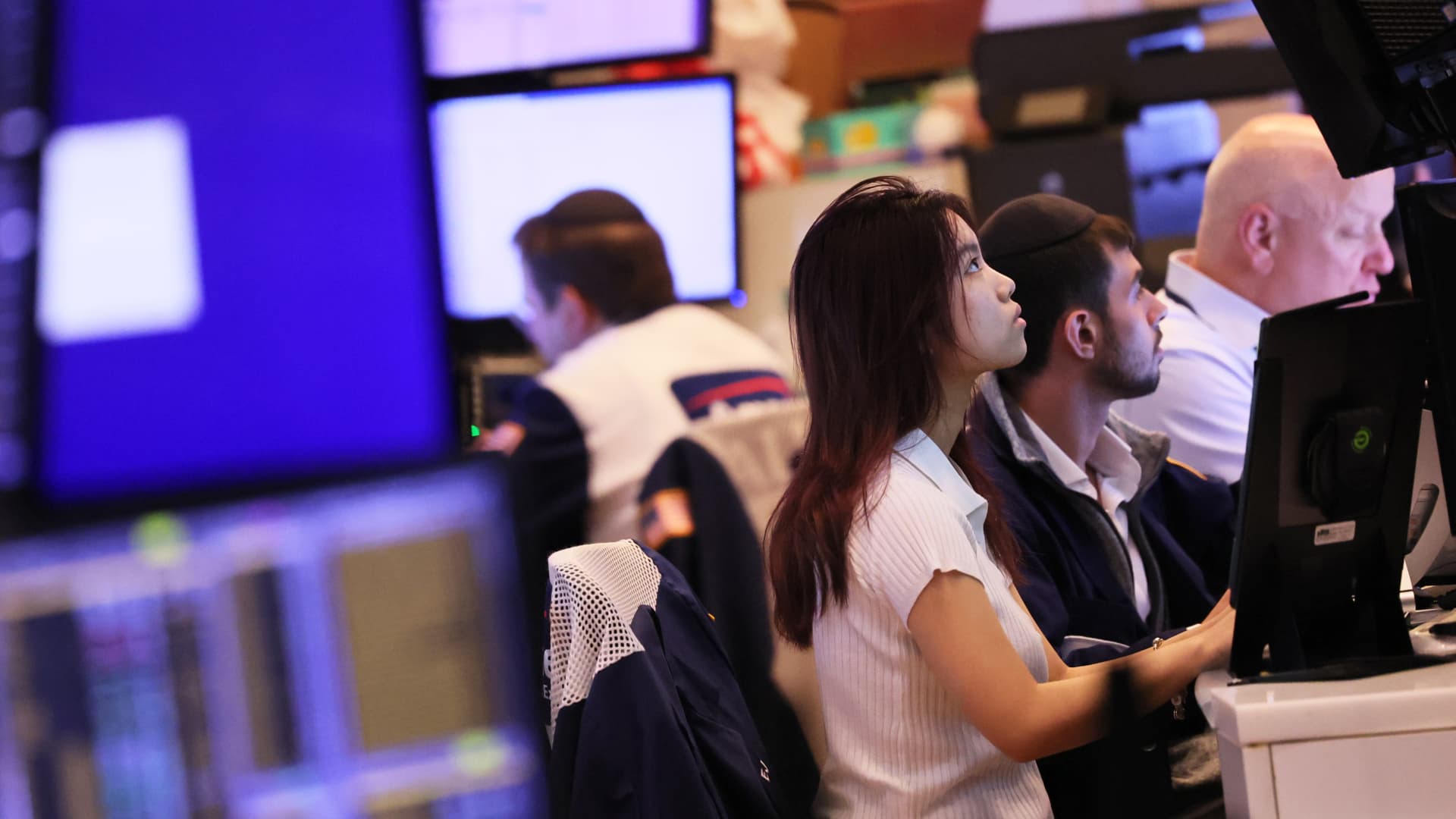This report is from today’s CNBC Daily Open, our new, international markets newsletter. CNBC Daily Open brings investors up to speed on everything they need to know, no matter where they are. Like what you see? You can subscribe here.
What you need to know today
More mixed markets
U.S. stocks closed Friday mixed. The Nasdaq Composite was the only major index to fall. Asia-Pacific markets traded mixed Monday as well. Hong Kong’s Hang Seng Index lost 1.4% to start the week, but Japan’s Nikkei 225 gained 1.22% on the back of the country’s seventh straight month of business activity expansion.
Booming U.S. economy?
Morgan Stanley has made a “sizeable upward revision” to its estimates for the U.S. economy. The bank expects GDP to grow 1.9% for the first half of this year, almost four times the original forecast of 0.5%. For the second half, the bank thinks GDP will grow 1.3%, compared with 0.6%. Joe Biden’s Infrastructure Investment and Jobs Act is “driving a boom in large-scale infrastructure,” wrote Ellen Zentner, chief U.S. economist for Morgan Stanley.
Demand for oil
Oil prices might spike in the second half of the year as supply fails to keep up with demand, Secretary General of the International Energy Forum Joseph McMonigle told CNBC. “India and China combined will make up 2 million barrels a day of demand pick-up in the second half of this year,” he said. However, McMonigle thinks OPEC+ will respond to a “big supply-imbalance.”
What Foxconn’s failure says
Foxconn’s recent decision to pull out of a joint venture to establish semiconductor manufacturing in India highlights how difficult it is for new players to enter the industry. High barriers to entry like lack of specialized labor, reliance on third-party technology and intellectual property mean TSMC’s 59% market share is likely to remain unchallenged for now.
[PRO] Fully packed week
This week’s packed full of economic data releases and earnings reports, and will see the Federal Reserve meet to decide on the path of U.S. interest rates. CNBC Pro’s Sarah Min breaks down what analysts are expecting and how they are positioning their portfolios to deal with the heavy week.
The bottom line
Let’s talk about the Dow Jones Industrial Average and why it did better than the S&P 500 and the Nasdaq Composite last week.
First, the numbers. The S&P and the Dow were essentially flat, while the Nasdaq Composite lost 0.22% Friday. (Technically, the Dow squeezed out a 0.01% gain to give it a 10-day winning streak, but that figure’s so negligible I don’t think it’s worth making a big fuss over it.)
On a weekly basis, the S&P advanced 0.79%, the Nasdaq fell 0.57% — but the Dow gained an impressive 2.08%.
A large part of the Dow’s showing was because of how the index is composed and calculated. It includes just 30 stocks, ostensibly chosen to represent the broader U.S. economy. To give an example, Goldman Sachs and JPMorgan Chase represent banks; Apple and Microsoft show up for technology; Nike and Procter & Gamble stand in for consumer goods.
The Dow’s other key difference from the S&P and Nasdaq is that it is price-weighted, that is, the more expensive the stock, the bigger its influence on the index. Conversely, the other two major indexes are capitalization-weighted, meaning that the higher the total value of the company’s total shares, the more sway it has in moving the index.
Now, let’s look at Friday’s stock movements.
Nvidia slumped 2.66%. It has a market capitalization of over $1 trillion. Unsurprising, then, that it had the biggest negative impact on both the S&P and Nasdaq. The Dow? The index doesn’t even include Nvidia, so it was spared.
The Dow, on the other hand, benefited from gains in firms like UnitedHealth and Goldman Sachs. Their stock prices are high — around $500 and $350 per share, respectively — but their total market capitalizations are comparatively low. Those gains wouldn’t register much on the S&P and Nasdaq, but boosted the Dow.
What does this all mean? Honestly speaking: Not much. According to CNBC’s calculations, over the past 15 years, the Dow and the S&P have moved in the same direction 94% of the time. So while it’s true the major indexes have diverged as of late — this week aside, the Nasdaq is leading by a 34% increase for the year, the S&P 18% and the Dow a meagre 6% — in the long run, it shouldn’t really matter what index you’re tracking. The lesson here? Don’t take short-term blips as long-term trends.

